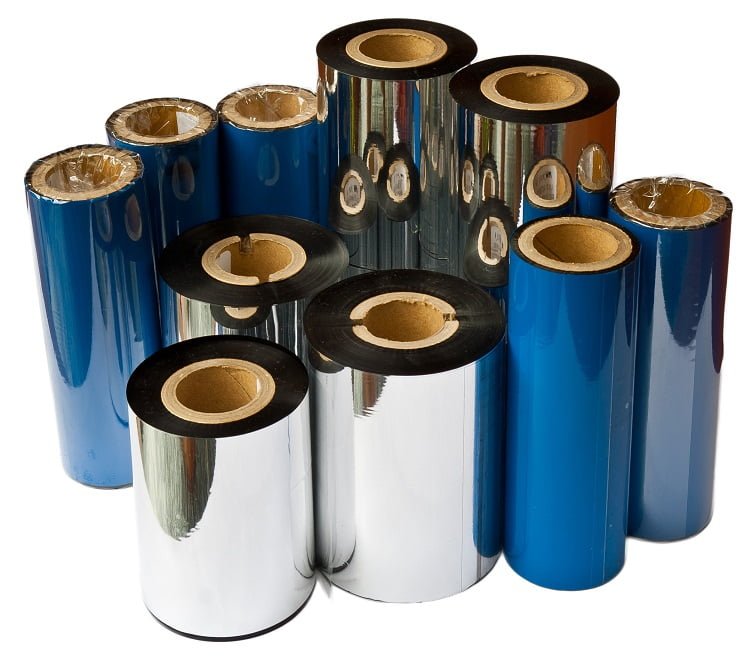thermal transfer ribbons
Thermal Transfer Printing is done by either one of these two types of print heads: Flat-Head print heads and Near-Edge print heads. Ribbons used for these two type of print heads are different and cannot be interchanged. Ribbons for each of these types of print head can be further subdivided into three categories.
Wax: Inexpensive, mostly used for indoor applications like supermarkets, chemists.
Semi-Resin: Long Life And Good Resistance.
Resin: For Harsh Environments, Extreme Conditions and Durable.
wax ribbons
Wax thermal transfer ribbons are the least expensive of all thermal transfer ribbons. They have a high percentage of wax-based substance in the colorant, which means that printing can be done at lower heat settings since waxes have lower melting points. However, because waxes are softer, image durability is less against smudging, scratching, chemical exposure, and environmental factors.
Wax ribbons are suitable for printing purposes where there is not much abrasion or physical contact against the printed matter or where the printing is not needed for a long time. They can be used for general-purpose labeling, such as price labels, food ingredients labels, shipping labels, address labels, garment tags, warehouse applications, and compliance label printing.
semi-resin or wax/resin ribbons
Semi-resin ribbons are our most popular ribbons because they combine wax and resin-based substances in the colorant. This combination provides better resistance to scratches and smudges than wax ribbons while being less expensive than resin ribbons. Semi-resin ribbons deliver excellent print quality on most label materials, including paper and film labels, making them suitable for most general-purpose applications.
resin ribbons
Resin ribbons contain the highest percentage of resin materials, which makes them highly resistant to chemicals, heat, abrasion, and other environmental conditions. Printing with resin ribbons requires higher energy levels or heat settings due to the resin's higher melting point. Labels may need to be printed at a slower speed to accommodate the higher energy levels required for printing.
Resin ribbons are best suited for use with textile apparel or garment labels, such as taffeta or satin, and high-gloss coated film materials, including polyester, polyolefin, destructible vinyl, warranty void labels, and labels that will be exposed to harsh environments, such as chemical drum labels, medical and pharmaceutical labeling, as well as industrial and automotive applications.
It's worth noting that resin ribbons are the most expensive of thermal transfer ribbons and are only printable on film-based label material.
other things to consider (barcode printer dependent)
Is the ink coating inside or outside?
Is it for flat type print head or near edge print head?
Ribbon width: Ideally adds minimum 10mm to the label's backing paper width.
Paper core diameter: Usually either 1" or 1/2".
Paper core width: It may be the same or wider than the ribbon width.
Maximum ribbon length or maximum ribbon diameter.
Are there any notches at the ends of the paper core?
